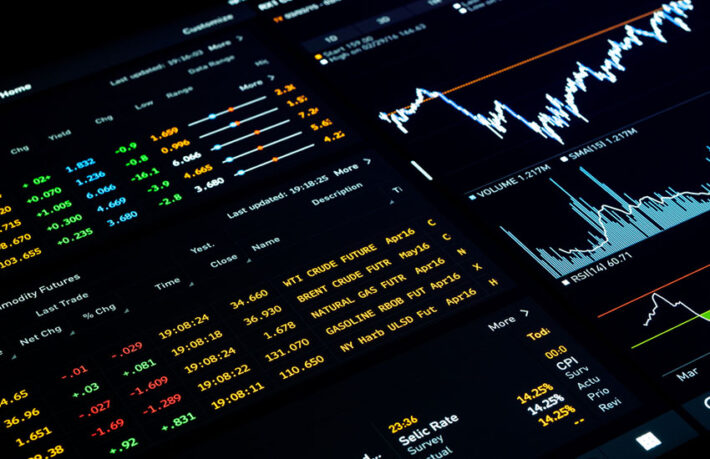Trading Patterns: The Visual Key to Strategic Decision Making
In the sector of trading, understanding price behavior is essential for making informed decisions. One of the tools most commonly used by traders is pattern identification, which allows them to anticipate possible market movements. These patterns are graphical formations that repeat themselves in asset prices, and their correct interpretation can mean the difference between a successful trade and a failed one. Below, we explore in depth what trading patterns are, why they are important, which are the most common, and how they can help you develop more effective strategies.
What are trading patterns?
Trading patterns are visual configurations that repeat on price charts and reflect recurring market behavior. They are formed through the interaction between buyers and sellers and allow traders to predict future movements based on the asset’s historical behavior. To identify them, it is necessary to apply technical analysis and plot data on a chart, which facilitates the recognition of recurring sequences and structures. This graphical representation becomes a key tool for building strategies and anticipating market movements.
Importance of patterns in technical analysis
Trading patterns are a fundamental visual guide for traders who rely on technical analysis. Their usefulness goes beyond simple observation:
- They help identify trends and consolidation phases—periods when the price moves sideways—indicating a pause before a continuation or reversal of a trend.
- They help detect signs of continuation or reversal, providing the opportunity to anticipate significant price movements.
- They provide information on key support and resistance levels, essential for defining entry or exit points and protecting against potential losses.
They contribute to better risk management and help adjust strategies according to market conditions.
In short, patterns increase your chances of success and help you act more strategically.
Types of Trading Patterns
There are dozens of patterns used by traders worldwide. Although the number may vary depending on the source (some cite up to 42), many are combinations or market-specific variations. For clarity, patterns are grouped into three main categories: trend reversal patterns, continuation patterns, and bilateral patterns.
Trend Reversal Patterns
These indicate that a trend is likely ending and a new one is beginning. Common examples include:
- Head and shoulders (HCH) and its inverse, which signal bearish and bullish reversals.
- Double top and double bottom, marking potential reversals after failed breakouts.
- Triple top and triple bottom, reinforcing trend changes with three consecutive highs or lows.
Rising and falling wedges, which can suggest reversals depending on the context.
Continuation Patterns
These suggest that the current trend will resume after a brief pause. Frequently used patterns include:
- Ascending and descending triangles, indicating bullish or bearish continuation.
- Symmetrical triangles, with breakouts typically confirming the existing trend.
- Flags and pennants, which form after sharp movements and suggest trend continuation.
- Rectangles, where price fluctuates within a range before continuing its direction.
- Wedges, which may also signal continuation based on direction.
Bilateral Patterns
These do not indicate a specific direction and can break either way:
- Symmetrical triangles, where breakouts may occur in either direction.
- Wedges and rectangles, whose implications depend on market context.
- Flags and pennants, which usually suggest continuation but can sometimes behave bilaterally.
The Most Common Trading Patterns
While there are many patterns, mastering a few is more effective than trying to learn them all. Some of the most recognized include:
- Head and shoulders (HCH): Formed by three peaks, with the middle one being the highest. Its breakout indicates a trend reversal from bullish to bearish. Traders often enter short positions with stop-losses placed above the shoulders.
- Double top and double bottom: These represent two failed attempts to break resistance (double top) or support (double bottom), typically anticipating reversals.
- Triangles: Ascending triangles suggest bullish continuation, descending triangles indicate bearish movement, and symmetrical triangles may break in either direction.
- Flags and pennants: Emerging after sudden moves, they signal pauses before continuation. Flags are rectangular; pennants form small triangles.
- Wedges: Created when trend lines converge. Their meaning depends on the preceding trend and the breakout.
How to Identify Patterns in Trading Charts
Traders use tools such as Japanese candlesticks, trend lines, and technical analysis platforms to spot patterns. Beginners should analyze historical charts, focus on simple patterns, and combine them with technical indicators like the RSI or moving averages.
What Is the Most Common Pattern in Trading?
One of the most common and easily recognizable patterns is the head and shoulders pattern. It’s highly effective for spotting trend reversals, making it popular among both novice and experienced traders.
Pattern-Based Trading Strategies
Patterns help define more precise entry and exit points and set stop-loss levels to manage risk. For instance, after identifying a flag pattern, a trader might enter after the breakout and place a stop-loss below the flag’s support.
Japanese Candlestick Patterns in Trading
Japanese candlesticks show price movement over a period, including the open, close, high, and low. Popular patterns include:
- Hammer: Signals a potential bullish reversal after a downtrend.
- Shooting star: Suggests a bearish reversal.
Engulfing: Indicates a reversal depending on its position and context.
These patterns provide confirmation for broader formations and strategies.
The Role of Volume in Trading Patterns
Volume is critical for confirming or invalidating a pattern:
- A breakout accompanied by high volume reinforces the pattern’s validity.
- A breakout on low volume may suggest a weak or false signal.
For example, in a symmetrical triangle, a volume spike during the breakout increases the likelihood of trend continuation.
Trading Patterns in Different Markets
Patterns apply across various financial markets:
- In stocks: Patterns like HCH and flags help identify trend shifts or continuations.
- In Forex: Due to high volatility, traders use triangles and double tops/bottoms to find opportunities.
- In cryptocurrencies: Crypto volatility fosters fast pattern formation. Traders rely on candlestick patterns and flags for swift reaction.
Common Mistakes When Trading with Patterns
A common mistake is misinterpreting patterns. Traders often see formations that don’t exist or force interpretations without confirmation. Another is relying solely on a single pattern without validating it with volume or other indicators. The key is practice, objectivity, and the use of multiple tools.
Conclusion
Trading patterns are a powerful tool for any trader aiming to build strategies with strong technical foundations. Recognizing and correctly interpreting them gives you a significant edge, enabling you to anticipate price movements and act confidently. However, identification alone isn’t enough—confirmation through indicators, disciplined risk management, and adaptation to market conditions are essential. With practice and a structured approach, patterns become a reliable guide in the ever-evolving landscape of financial markets.


